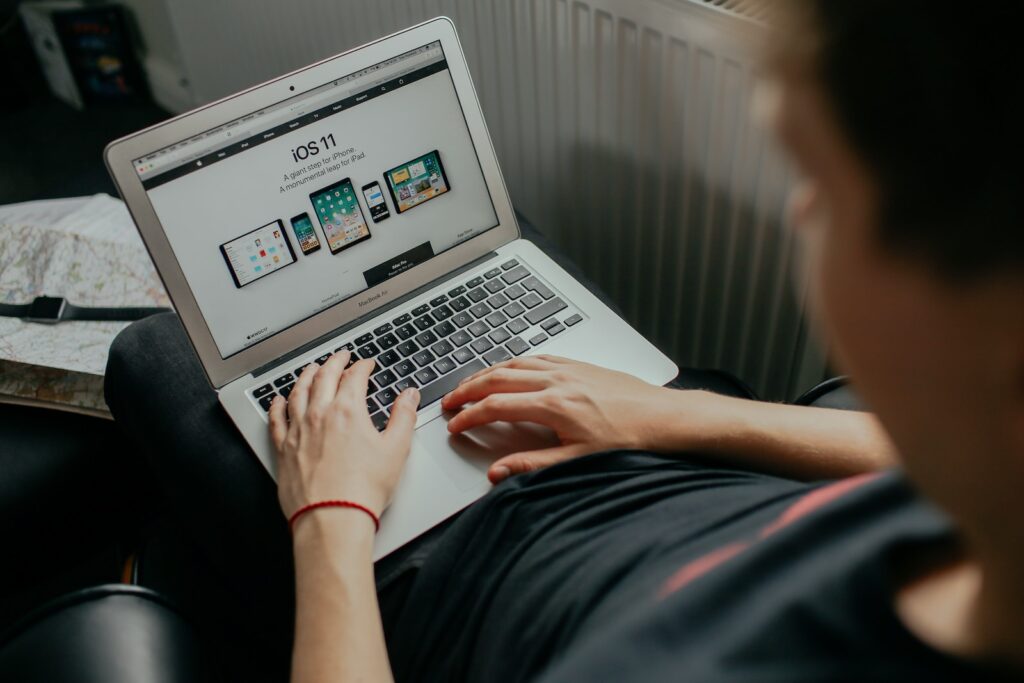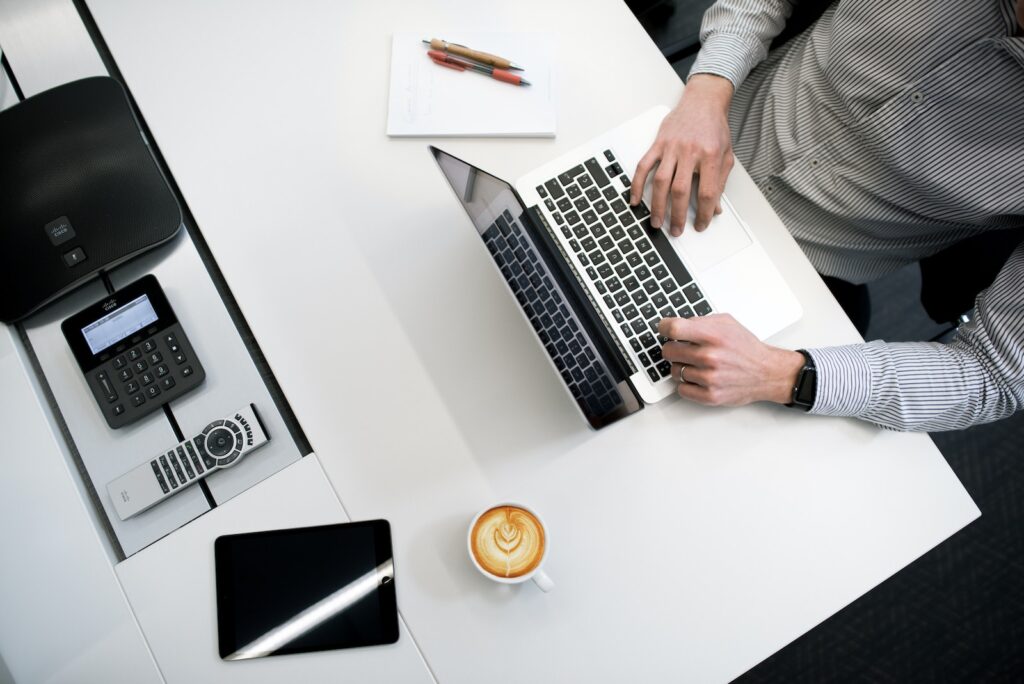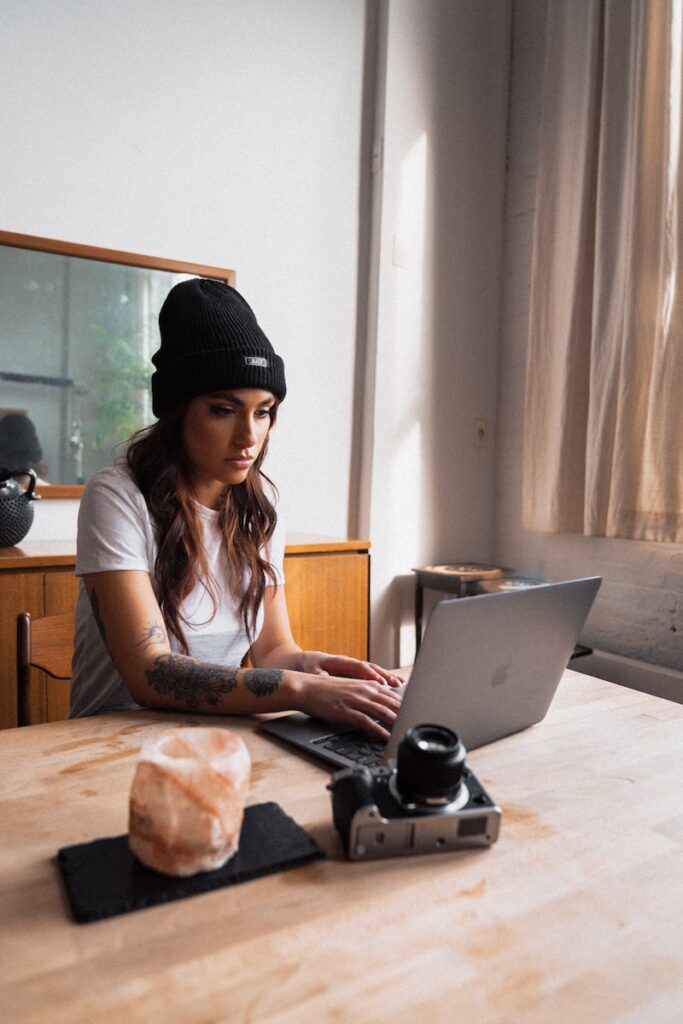Hey there, fellow bloggers! Are you tired of cluttered and overwhelming blog layouts?
Do you find yourself struggling to navigate through endless menus and widgets on other blogs?
Well, my minimalist friends, I have some good news for you – less is more!
In today’s fast-paced world, we are bombarded with information overload.
That’s why a minimalist blog layout can be the perfect solution to grab your reader’s attention without overwhelming them.
By keeping your design clean and simple, visitors will be able to focus on what really matters – your content.
So let’s dive into the benefits of a minimalist approach and how it can improve your blogging game.
The Benefits Of A Clean Design

A clean design is like a blank canvas waiting to be painted on. It provides the perfect foundation for showcasing your content and maximizing impact without any distractions.
In today’s fast-paced digital world, users have little patience for cluttered websites that hinder their browsing experience. By opting for a minimalist blog layout, you can improve user experience by providing an uncluttered interface that allows them to focus solely on what matters most – your content.
This helps reduce bounce rates and increases engagement as visitors are more likely to stay longer on your site if they find it easy to navigate and visually appealing. Moreover, simplicity is key when it comes to web design.
A cleaner aesthetic not only looks modern but also creates a sense of professionalism and credibility, which can help build trust with potential customers or clients. By eliminating unnecessary elements from your website’s design, you can create a seamless online presence that truly represents your brand values and message without overwhelming your audience.
Emphasizing Your Content

Design elements play an important role in emphasizing your content.
With minimalism, every element on the page should have a purpose and contribute to creating a visual hierarchy that guides the reader’s eyes towards what’s most important.
Content curation is also crucial for minimalist bloggers.
Decluttering your website from unnecessary information or images can help emphasize your message and make it stand out even more.
Less really is more when it comes to this design style.
To truly emphasize your content, consider these three tips:
- Use whitespace strategically to create balance and give your readers’ eyes some space to rest.
- Choose typography that complements the mood of your content while keeping it legible and easy to read.
- Incorporate high-quality imagery that enhances your message rather than distracts from it.
By incorporating these design elements into your blog layout and curating your content effectively, you’ll be able to create a clean and visually appealing website that puts emphasis where it matters most – on your valuable content.
Streamlining Your Navigation

Emphasizing Your Content was all about making your content stand out above the rest. But what good is great content if it’s lost in a sea of confusing navigation? That’s where Streamlining Your Navigation comes in.
First, let’s talk about Horizontal vs Vertical Navigation. Horizontal navigation menus are often seen at the top of websites and are useful for showcasing important pages or categories. However, they can take up valuable screen real estate and become overwhelming with too many options.
On the other hand, vertical navigation menus are more compact and can easily be hidden behind a hamburger icon on mobile devices. They also allow for longer menu items without taking up too much space.
Next up, Simplifying Your Menu. It’s easy to get carried away with adding every possible page or category to your menu, but this can lead to confusion and frustration for visitors trying to navigate your site. Instead, focus on the most important pages or categories that align with your overall goals for the site. Consider using sub-menus or drop-downs to further organize your content.
Remember, when it comes to minimalist blog layouts, less is more even when it comes to navigation. Keep it simple and streamlined for an optimal user experience.
Using Negative Space To Your Advantage

Maximizing impact in a minimalist blog layout means removing distractions and utilizing negative space to your advantage.
Negative space, also known as white space, is the empty area surrounding design elements. By leaving enough negative space around text and images, you can create a clean and uncluttered look that draws readers’ attention where it matters most.
Using negative space effectively involves careful planning of your layout. Choose only essential elements for your website’s design, such as colors, fonts, and graphics. Avoid adding too many decorative or unnecessary features that could distract from what really matters: your content.
Negative space isn’t just about aesthetics—it can also increase readability. When there are fewer competing elements on the page, users can focus better on reading the text.
A well-designed minimalist blog layout with ample negative space can make your writing more inviting to read while providing maximum impact without overwhelming visitors with visual clutter.
Choosing The Right Typography

When it comes to designing a minimalist blog layout, typography plays a crucial role in the overall aesthetic. Choosing the right typography can make or break your website’s visual appeal and readability.
In this section, we’ll discuss some tips for selecting ideal fonts and font sizes that complement each other.
Firstly, consider typography pairing. Combining two different typefaces can add depth and contrast to your blog design while maintaining simplicity. However, ensure that they pair well together by selecting fonts with similar x-heights, stroke widths, and serif styles.
Secondly, optimize font size for easy reading on desktop and mobile devices. Aim for a base font size of at least 16px to guarantee legibility on all screens. If you’re using smaller text sizes for headings or captions, keep them proportionate to the body copy.
Thirdly, use hierarchy in typography to guide readers’ attention through your content quickly. A simple way is to increase font weight or style (bold/italic) as needed from heading down to subheadings and body text.
Lastly, limit yourself to using no more than three different typefaces throughout your entire site – one primary font family for headlines and subheads, another for body copy, and possibly a third for accent elements such as pull quotes or blockquotes.
In conclusion, choosing the right typography requires careful consideration of various factors such as pairing, sizing optimization, hierarchy creation while following minimalism principles. By keeping these tips in mind when designing your blog layout will help you achieve an elegant yet functional look without sacrificing usability or accessibility!
Incorporating Minimalist Color Schemes

As we discussed in the previous section, typography plays a crucial role in creating an appealing blog layout.
Now let’s delve into another critical aspect of minimalist design – color schemes.
Color psychology is a vital component when it comes to designing any branding material. Minimalist branding focuses on simple and elegant colors that evoke emotions such as calmness, clarity, and sophistication.
It’s all about using minimal hues to create maximum impact.
When incorporating a minimalist color scheme for your blog layout, choose two or three primary colors that complement each other well. Avoid bright shades or too many variations of the same hue.
Remember, less is more! By carefully selecting your color palette, you can create a visually stunning blog without overwhelming your readers with excessive use of colors.
Tips For Achieving A Minimalist Blog Layout

When it comes to designing a minimalist blog layout, there are certain tips that can help you achieve the desired outcome.
One of these is designing for mobile first. With more and more people accessing websites on their phones, it’s important to prioritize this aspect in your design process. This means keeping things simple and easy to navigate with larger font sizes and ample white space.
Another key tip is balancing simplicity and functionality. While minimalism focuses on removing unnecessary elements, it’s still essential to ensure that your blog remains functional. You don’t want visitors struggling to find what they’re looking for or feeling frustrated by a lack of features. So, while simplifying your layout, make sure you retain all necessary functions such as search bars, navigation menus, and social media links.
To really capture your audience’s attention, consider implementing some creative design touches into your minimalist layout.
Here are three ideas to get you started:
- Use striking typography
- Incorporate bold color accents sparingly
- Add subtle animations or hover effects
Remember though, the key is not going overboard with any of these elements – less is always more when it comes to minimalist design.
Designing an effective minimalist blog layout requires careful consideration of every element on the page.
By prioritizing mobile optimization, finding the right balance between simplicity and functionality, and adding creative touches where appropriate, you’ll be well on your way to creating a layout that catches readers’ eyes without overwhelming them with cluttered visuals or confusing navigation paths.
Key Takeaways
- Minimalist blog layouts can provide a clean and uncluttered design, focusing on content and maximizing impact.
- A minimalist approach improves user experience by reducing distractions and allowing visitors to navigate easily.
- Emphasizing content through strategic use of whitespace, typography, and imagery is crucial in minimalist blog layouts.
- Streamlining navigation simplifies the user experience and helps visitors find what they’re looking for.
- Negative space, or white space, is essential in minimalist designs to create a clean and uncluttered look.
- Choosing the right typography enhances the visual appeal and readability of a minimalist blog layout.
- Minimalist color schemes evoke emotions such as calmness, clarity, and sophistication.
- Designing for mobile optimization, balancing simplicity and functionality, and adding creative design touches are key considerations in minimalist blog layouts.
Useful Table
| LSI Keywords | Explanation |
|---|---|
| Minimalist blog layout | Focuses on clean and uncluttered design |
| User experience | Enhancing visitors’ satisfaction and ease of use |
| Emphasizing content | Highlighting the importance of content in design |
| Streamlining navigation | Simplifying the user’s journey through the website |
| Negative space | Empty area surrounding design elements |
| Typography | The selection and arrangement of fonts |
| Minimalist color schemes | Simple and elegant color palettes |
| Mobile optimization | Designing for optimal performance on mobile devices |
| Simplicity and functionality | Balancing minimalism and necessary features |
| Creative design touches | Adding unique and visually appealing elements |
Frequently Asked Questions
Why should I choose a minimalist blog layout?
A minimalist blog layout offers several benefits. It simplifies the user experience, reduces distractions, and allows visitors to focus on your content. It also gives your website a clean and professional look, improving credibility and user engagement.
How can a minimalist blog layout emphasize my content?
In a minimalist design, every element on the page has a purpose and contributes to creating a visual hierarchy that guides the reader’s attention. By using strategic whitespace, legible typography, and high-quality imagery, you can make your content stand out and capture readers’ attention.
What is the role of navigation in a minimalist blog layout?
Streamlining navigation is essential in a minimalist blog layout to ensure that visitors can easily find what they’re looking for. You can achieve this by simplifying menu structures, choosing between horizontal and vertical navigation menus, and using dropdowns or sub-menus to organize content effectively.
How does negative space contribute to a minimalist blog layout?
Negative space, also known as white space, is the empty area surrounding design elements. By utilizing negative space effectively, you create a clean and uncluttered look that allows readers’ attention to focus on the most important elements. It also improves readability and helps avoid visual clutter.
What considerations should I keep in mind for a minimalist color scheme?
Minimalist color schemes aim for simplicity and elegance. Choose two or three primary colors that complement each other well and evoke emotions such as calmness, clarity, and sophistication. Avoid using too many variations of the same hue or bright shades. Remember, less is more when it comes to color choices in minimalist designs.
Remember, a minimalist blog layout is about creating a clean and uncluttered design that highlights your content while providing a great user experience.
Final Thoughts
In conclusion, a minimalist blog layout is more than just an aesthetic choice – it’s also a strategic one.
By simplifying your design and emphasizing your content, you can create a better user experience for your readers.
Think of it like decluttering your home – when you remove excess items, everything becomes easier to find and appreciate.
The same goes for your website.
With fewer distractions and a focus on what truly matters, your message will come across loud and clear.
So if you’re looking to revamp your blog or start from scratch, consider adopting a minimalist approach.
It may take some extra effort upfront to streamline your site, but the end result will be worth it.
Remember: less is more!

